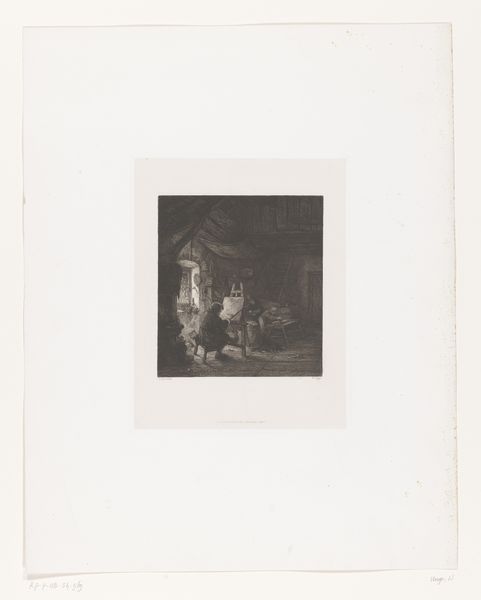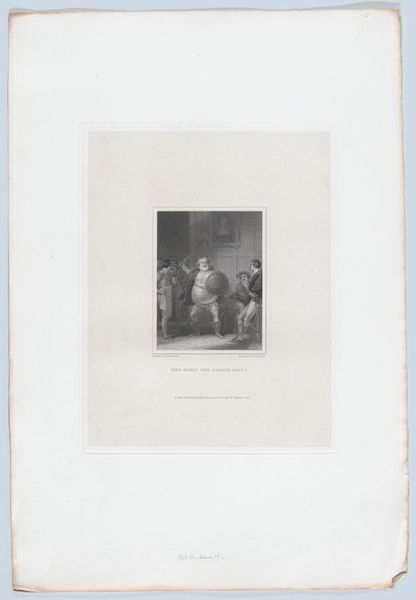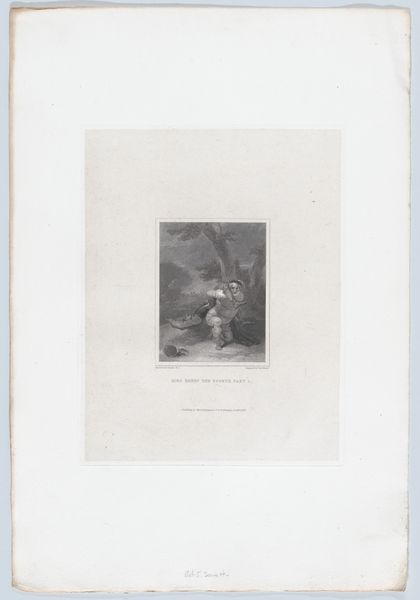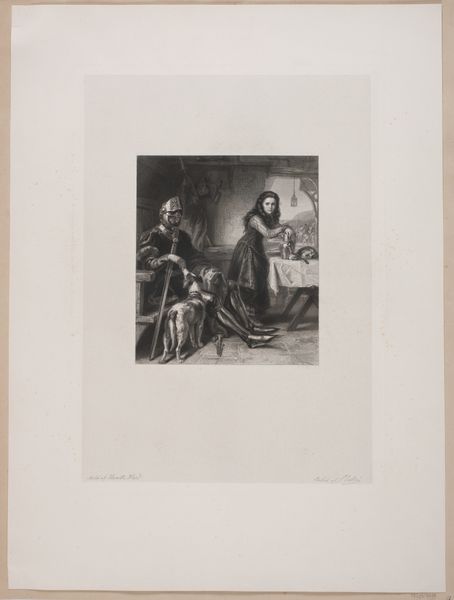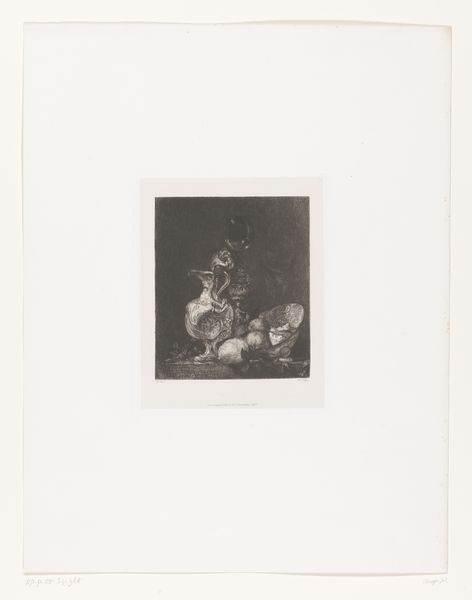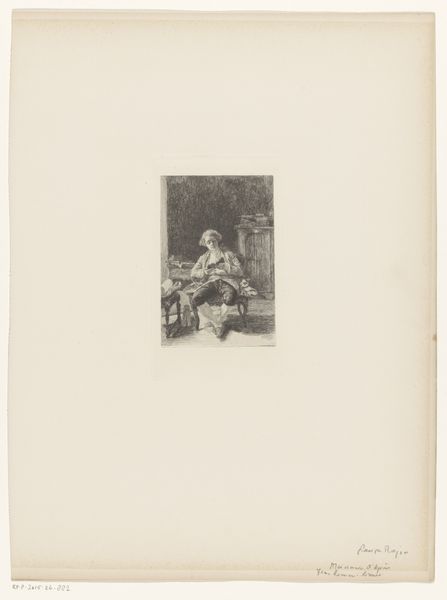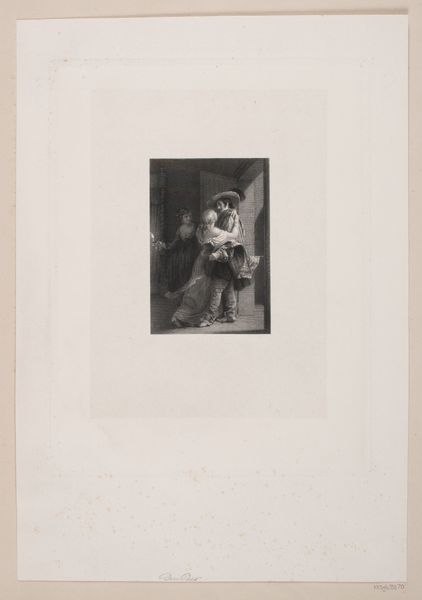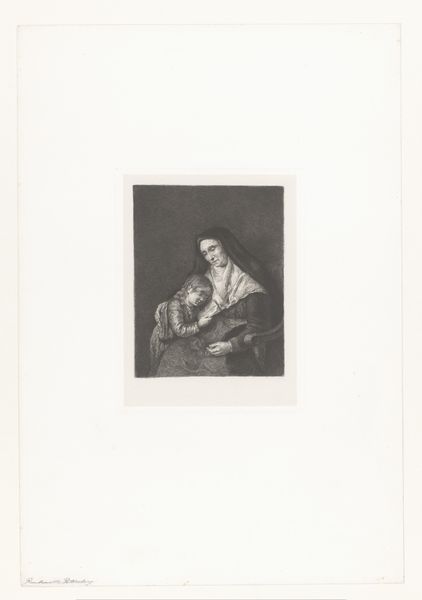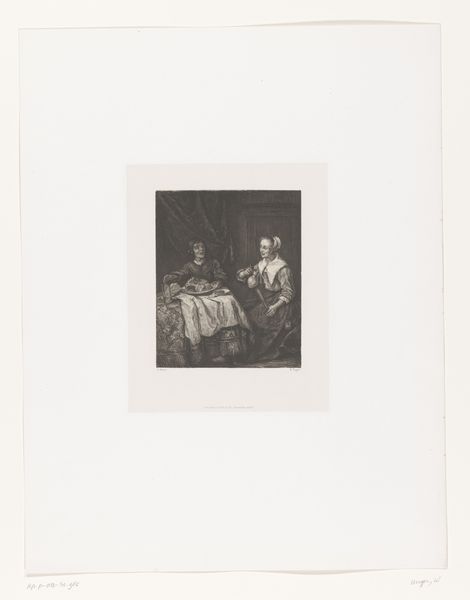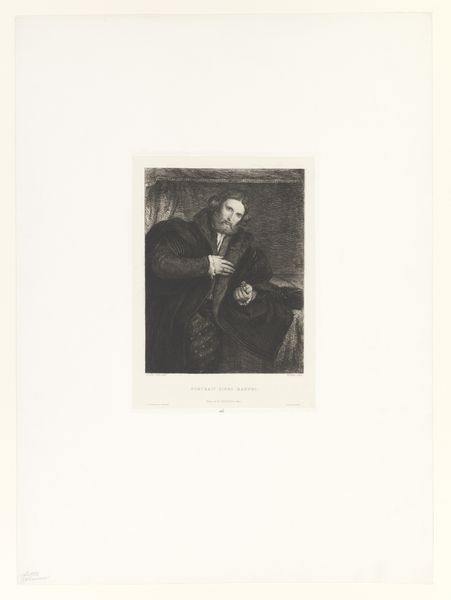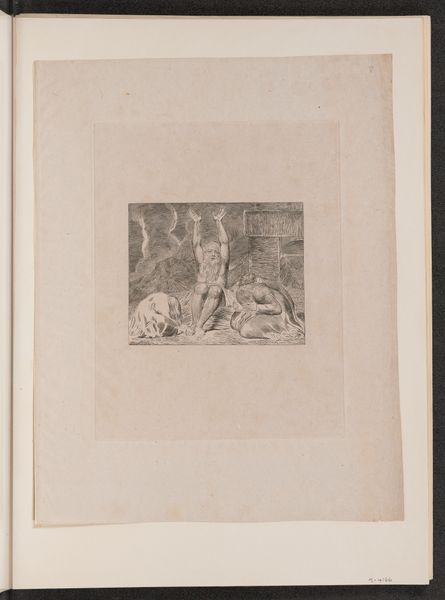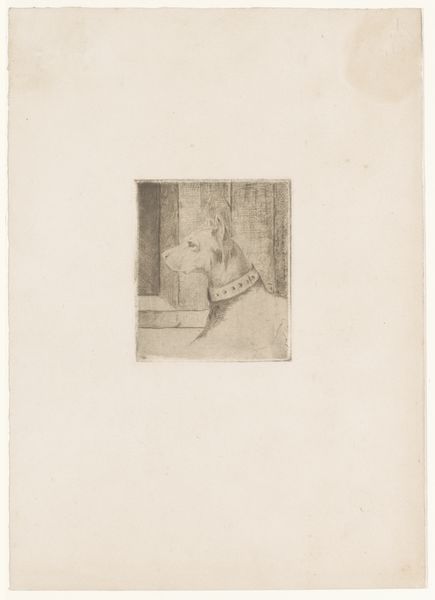
Dimensions: 470 × 355 × 20 mm
Copyright: Public Domain
Curator: This is Theodore Roussel’s "Phaeton Pattern Frame," an etching and drypoint on paper, created between 1907 and 1908. Editor: Woah, intense. It looks like it was pulled straight out of a dream. The shadowy figure looming over the anvil has this dramatic flair, all sharp contrasts. Sort of foreboding, don’t you think? Curator: Indeed. Roussel’s printmaking techniques—etching combined with drypoint—allowed for a rich range of tonal variations, essential for creating that dramatic effect. We need to see this as part of the wider artistic movement away from Victorian sentimentality and toward a new visual language that valued symbolism and suggestion. Editor: Absolutely, he’s caught the laborer mid-action—it’s a moment pregnant with creative, and destructive, possibility. Is Phaeton meant to represent the modern-day blacksmith, maybe to add an epic, even mythological dimension to manual work? It’s all in that dance of shadow and light, turning something ordinary into something borderline mythic. Curator: Roussel was very intentional in the composition and framing of his images. Notice how the figure commands the center ground, its power further augmented by the presence of a subdued figure off to the side—who knows what this person’s presence does for the composition as a whole, adding intrigue and possibly an alternate viewpoint of the moment we witness. Editor: Yeah, it's that whole dance of opposites—power versus reflection, light versus shadow. Roussel’s work pushes at that boundary where craft meets the divine spark, something raw and real morphs into an almost otherworldly presence. Curator: I think that is spot-on. The socio-cultural context of Roussel’s time very much celebrated labor as a transformative process, linking individual effort to the broader progress of society and a desire to bring value to everyday hard work. Editor: In a nutshell, it's more than just ink on paper, then—it's Roussel wrestling with humanity itself! Curator: Precisely! And a challenge to our perception of the role of labor in creating meaning in an era of massive industrial and social change. Editor: Makes you think, doesn’t it? Time for some tea...
Comments
No comments
Be the first to comment and join the conversation on the ultimate creative platform.
